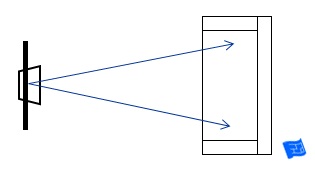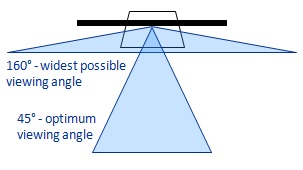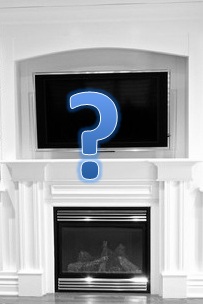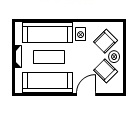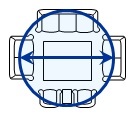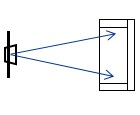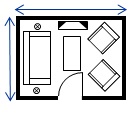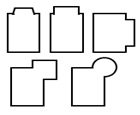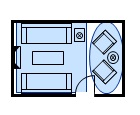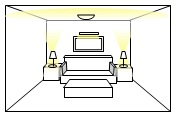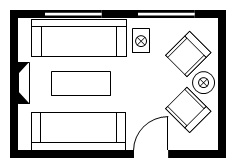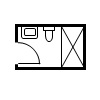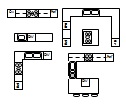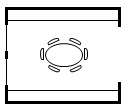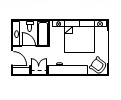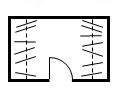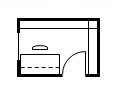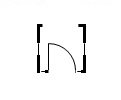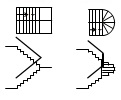- Home
- Living Room Design
- Tv Viewing Distance
TV Viewing Distance
Where should I put the TV?
Is your TV viewing distance correct?
Love it or hate it, the reality is most homes have a TV. Maybe you have a TV in one of your living rooms, maybe in the kitchen, maybe in some of the bedrooms. To get the best out of watching TV you need to know the TV size that's appropriate for your room layouts and where it's best to put it.
See the other pages in the living room design series.
|
In addition to TV viewing distance it’s important that...
|
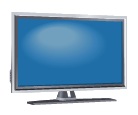 |
TV Viewing Distance
If you can lay your hands on the manual for your TV that's the best place to look as different manufacturers make slightly different recommendations. If you don' t have the manual, use the table below to work out your TV viewing distance.
|
Diagonal screen size 26" 32" 37" 43" 47" 51" 55" 60" 65"+ |
TV viewing distance range in feet (m) 3'3" - 6'6" (1.0 m – 2.0 m) 3'8" - 7'6" (1.1m - 2.3m) 4'3" - 8'5" (1.3m - 2.6m) 5'3" - 10'5" (1.6m - 3.2m) 5'9" - 11'8" (1.8m - 3.6m) 6'3" - 12'5" (1.9m - 3.8m) 6'9" - 12'8" (2.1m - 3.9m) 7'5" - 15' (2.3m - 4.6m) 8'1" - 16'2" (2.5m - 4.9m) |
TV Viewing Angle
The TV maximum viewing angle will depend on your TV and the technology it uses (LCD, LED or plasma). The technology is so good these days that you are far more likely to become bothered by trying to make sense of the picture when watching from a wide angle rather than the picture becoming dim or loosing color quality. Another way of saying this is that you can almost consider your TV as a painting. You’d much rather look at a painting head on, and the further to the side you move, the harder it is to make sense of it, but because it’s a painting there’s no changes in light levels or color quality.
Most flat screen TVs offer a very wide TV viewing angle – up to about 160 degrees which means that you can see the image on the TV screen from almost anywhere in the room but for a good experience watching TV make sure you get a seat inside 45 degrees.
TV Height
Ideally, the TV height should be on a level with the line of sight of those watching it. So figure out where your line of sight is on the sofa, in bed, or when you’re making dinner and find a spot for the TV where the center of the TV is level with your eyes. A good TV bracket (with good rotation and tilt options) can go a long way to getting your TV in a good position.
|
Since boxy TVs were replaced by flat screen models, over the fireplace TV placement has become very popular, mainly because it’s one way to solve the TV / fireplace focal point conflict. Most TV gurus say this is a bad idea though:
|
TV Lighting
Some flat screen TVs come with lights on the side of the TV which throw out a gentle glow around the TV. This is because watching TV in a dark room can make your eyes tired. So if your TV doesn’t have these lights think about shining a gentle light against the wall behind the TV and this will have the same soothing effect.
Ideally the TV screen should not face a window (particularly a sunny window) as this causes glare from the screen. In the TV area it’s useful to have a blind or curtain that will diffuse any direct light, but still let some light through during the day time so you can watch the TV in comfort but not feel as if you’ve got the curtains closed during the day time.

